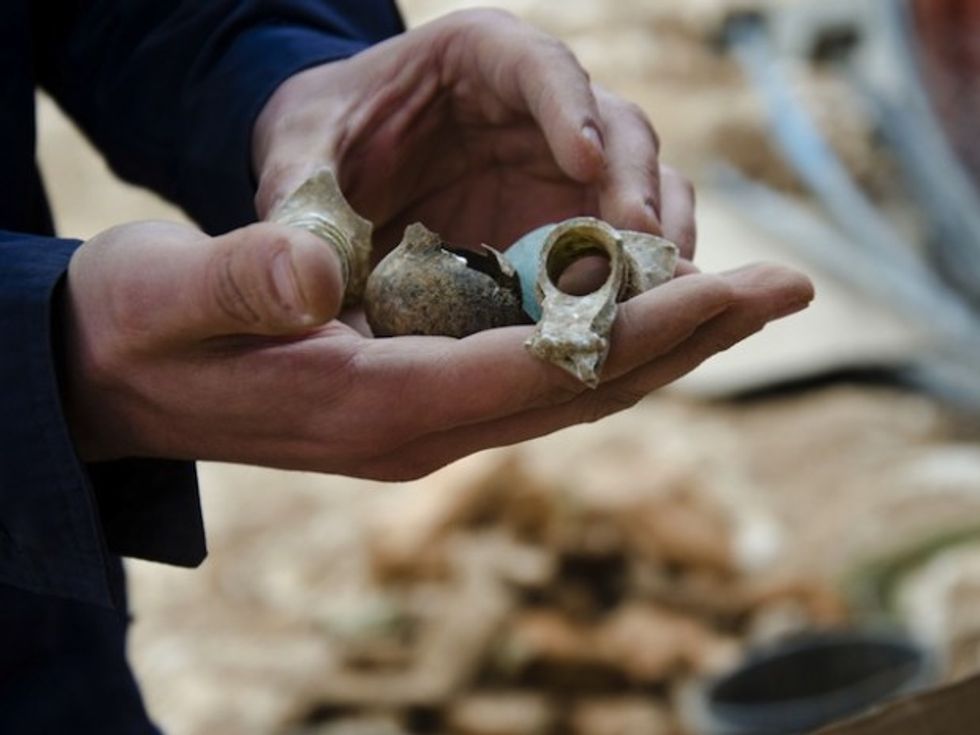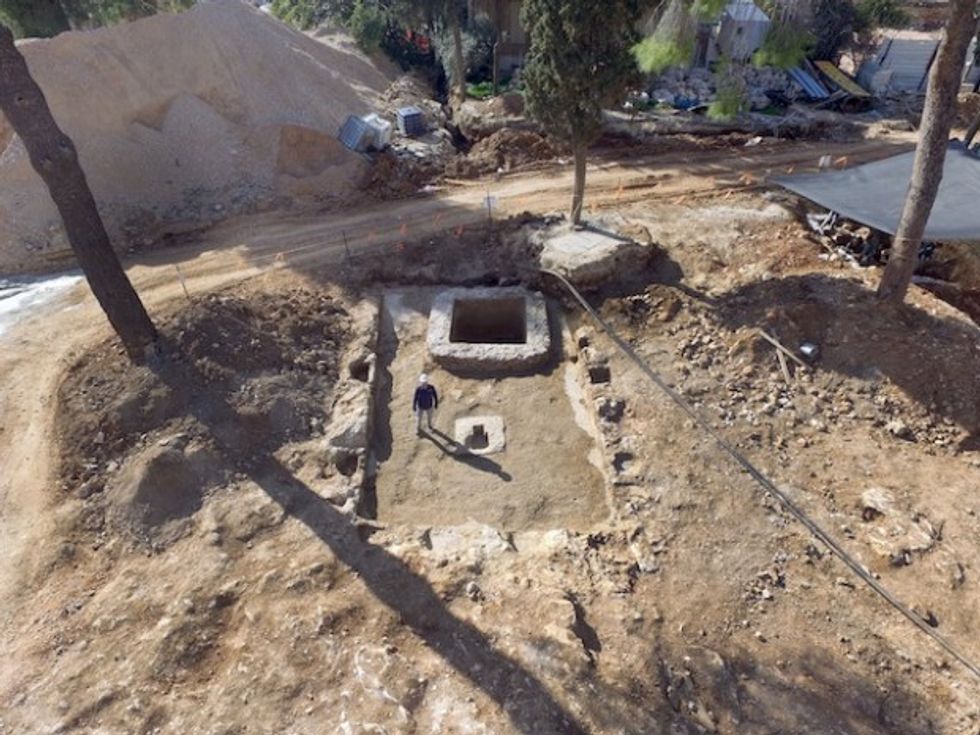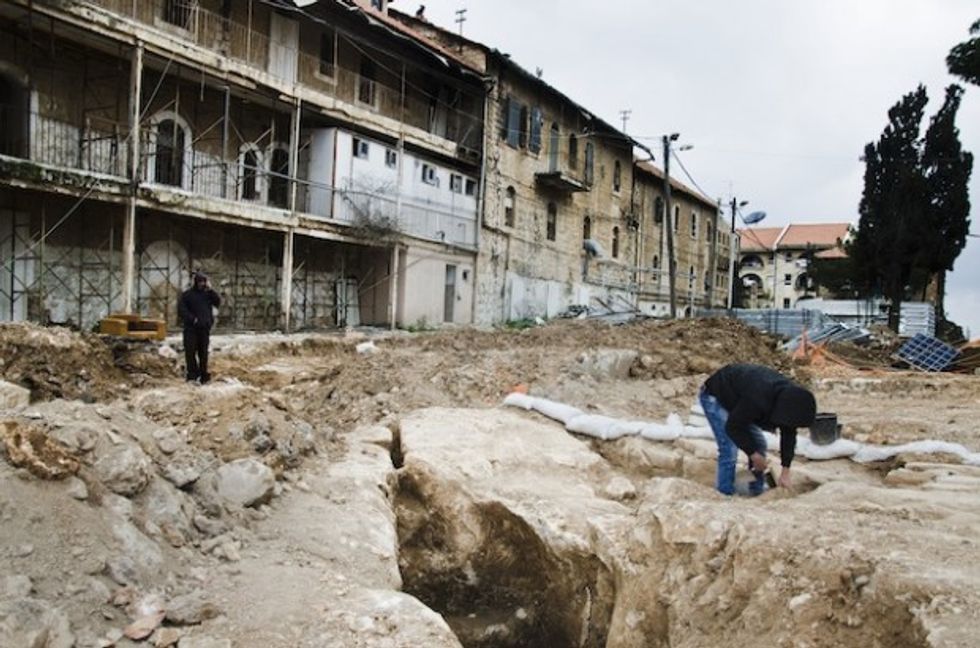
Archaeologists found ancient pottery sherds and glassware fragments inside a plastered pit at the site, suggesting that a workshop operated there and used the ancient pit for discarding waste. (Photo courtesy: Israel Antiquities Authority)

Israeli archaeologists said they were “astonished and surprised” to find artifacts, some dating to the time of Jesus, over the past six months under a storied compound in Jerusalem that has served during recent history at times as an orphanage and others as an army base.
“We were astonished and surprised by the remains we found here,” archaeologist Amit Re’em of the Israel Antiquities Authority said.

The Antiquities Authority announced Wednesday that archaeologists had discovered artifacts — some as old as the Second Temple period — when they were surveying the site planned for the construction of new housing.
The site known as the Schneller compound served as a Lutheran-run orphanage during the 19th century and later became a military base during the time of British rule between World War I and World War II and later for the Israeli army.

Among the finds were “a large and impressive winery dating to the Roman or Byzantine period, some 1,600 years ago,” the Antiquities Authority said in a statement announcing the discovery.
The winery included a white mosaic-paved pressing surface as well as eight compartments that archaeologists believe may have been used to store ingredients with which to produce different flavors of wine.
Near the winepress, a bathhouse was unearthed that included terra cotta pipes via which hot air may have been piped in to provide heat. Clay bricks found at the site were stamped with the name of the 10th Roman Legion, one of four legions that joined the conquest of Jerusalem from the Jews in 70 A.D.
Its units were garrisoned in the city until 300 A.D.
Six months ago, archaeologists found evidence at the Schneller site of a Jewish settlement dating to the late Second Temple period from 63 B.C. to 70 A.D.
Archaeologist Re’em said that before the construction project was planned, nobody knew what was underneath.
“This is the magic of Jerusalem. Everything is layers upon layers in one place,” Re’em said.
“Once again, Jerusalem demonstrates that wherever one turns over a stone ancient artifacts will be found related to the city’s glorious past,” said Alex Wiegmann, excavation director for the Israel Antiquities Authority.

The Jerusalem Post once wrote about the history of the Schneller Orphanage, noting that it was founded by a devout Lutheran missionary Father Johann Ludwig Schneller who traveled to Jerusalem in the mid-1800s with the hopes of serving the local population.
He bought a plot of land outside the safety of the walls of the Old City and “bravely began building a beautiful house for his family” before being forced to move to an area within the protecting Old City walls following attacks by local Arab robbers.